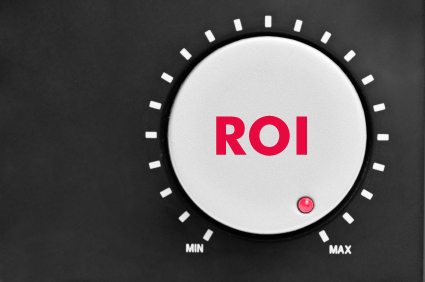
by Fronetics | May 16, 2016 | Blog, Content Marketing, Logistics, Marketing, Supply Chain

Dear companies in the logistics and supply chain industries,
You have leveraged technology and innovation so that two-day shipping is becoming more of the norm rather than the exception. You have developed processes and standards for IT Asset Disposal (ITAD), which mitigate asset recovery management and increase data security. You have leveraged 3-D printing — disrupting the status quo.
Cathy Morris, senior vice president and chief strategy officer for Arrow Electronics, Inc., puts it well: “Products can be made, money can be invested, ideas can be brought to fruition, but without the supply chain everything stops. The supply chain provides routes to market; everything hinges on an effective supply chain.”
In short, logistics and supply chain — you are pretty damn awesome.
Given your awesomeness, I wonder why marketing firms have taken to courting your business by promoting that they do “content marketing for boring industries.” You are not boring (in the least). Why would you choose to partner with someone that finds you boring?
Content marketing can be an effective tool for your business. When aligned with your business objectives, content marketing can:
- Build brand awareness
- Position your company as a thought leader within the industry
- Increase engagement with customers, partners, and stakeholders
- Educate and inform customers, partners, and stakeholders
- Build trust
- Allow you to manage your reputation
- Generate leads
Given the impact a successful content marketing strategy can have on your business, doesn’t it just make sense to find a marketing firm that recognizes the value of your industry and of your company; a firm that recognizes your awesomeness?
I lead the digital and content marketing arm of Fronetics Strategic Advisors. Our firm focuses on companies within the logistics and supply chain industries. Why do we do this? We do this because we have deep expertise in these industries, and because we believe in these industries. We stay up to date on industry trends. Phrases like: “Can you believe the capabilities of company x’s new forklifts?” and “Wow, the reverse logistics implications of that are going to be significant,” are daily conversations for us.
I am not saying that you need to choose our firm as your marketing firm, but, please, choose a firm that believes in you. When choosing an outsource partner, evaluate not just the firm’s marketing capabilities, but also their knowledge of your industry.
You do incredible work. Find a partner who recognizes this, not one who finds you boring.

by Fronetics | Jan 7, 2016 | Blog, Content Marketing, Marketing, Supply Chain

Last year was big for content marketing within the logistics and supply chain industries. While companies in general had been hesitant to adopt an inbound marketing approach, many caught on and found this strategy to have a major impact on business in 2015.
Fronetics has helped many clients achieve their goals through targeted inbound marketing efforts. Our data-driven approach aligns business objectives with a marketing program that delivers results with a targeted ROI.
Here are the top content marketing articles in 2015:
1. Five reasons companies in the supply chain and logistics industries should use inbound marketing
Though many companies within the supply chain and logistics industries tend to disregard inbound marketing, it actually can be a wildly successful strategy. Here are five reasons why companies in these industries should be using inbound marketing. Read the full article.
2. Content and Social Media: A Perfect Match for Customer Engagement and Business Growth
This guest blog by Kecia Gray, former vice president of corporate marketing & communications at Transplace, discusses how social media has become an integral part of Transplace’s marketing and communications strategy. It has been key to expanding brand awareness and the company’s thought leadership in the logistics and transportation space. Read the full article.
3. Content as a marketing tool for the logistics and supply chain industries
Fronetics Strategic Advisors conducted a survey focused on the use of content within the logistics and supply chain industries found that companies are using content as a marketing tool and are realizing results. Read the full report.
4. Report: Content use within the logistics and supply chain industries
The survey on industry content use conducted by Fronetics found that companies within the logistics and supply chain industries are creating more content than ever before. Respondents reported using content marketing in order to strengthen overall brand awareness, generate leads, and establish the company as an industry leader. Read the full report.
5. All content is not created equal. Why you need good content.
Good content drives profitable customer action, while bad content is a waste of time and precious resources. What makes good content, and how can you get it? Read the full article.
6. Get Results from Content Marketing by Telling Great Stories
Guest author Thijs Messelaar, a 15-year content-writing veteran, explains how the best content marketing is like a really good story. You must engage your audience emotionally to get them interested in you and to earn their trust. Read the full article.
7. Content marketing ROI for reverse logistics companies
Inbound marketing is effective in garnering consumers’ attention, but it is important to assess return on investment. Reverse logistics companies can use a fairly simple formula to calculate content marketing ROI. Read the full article.
8. Content marketing for the logistics and supply chain industries
Fronetics developed a content marketing guide specifically for companies within the logistics and supply chain industries. In it is step-by-step instructions, templates, lists, and samples to walk you through building your own content strategy. Read the full article.
9. Using inbound marketing to market and sell luxury real estate
Many luxury real estate firms are already using digital and social media to carry the lifestyle brand they’ve built around their properties into the online world. With the use of inbound marketing, they are creating new virtual “touch points” to connect with affluent buyers. Read the full article.
10. Six digital and content marketing tasks to outsource
Outsourcing several digital and content marketing tasks can help companies enjoy a reduction (or cost savings) in operating costs, improve their focus on core competencies, and let employees concentrate on their highest and best use. This article identifies six areas where companies can leverage outsource partners to support their digital efforts. Read full article.
If you are looking to increase business in 2016, consider contacting Fronetics to develop a content marketing strategy. We work with you to create an individualized plan for your specific situation and needs. We identify challenges, trends, and opportunities and take action so that your content marketing program constantly evolves and delivers results.
You may also like:

by Fronetics | Aug 4, 2015 | Blog, Content Marketing, Logistics, Marketing, Supply Chain

Do reverse logistics companies need to focus on content marketing? Yes.
Should they use LinkedIn? Yes. Twitter? Yes. YouTube? Yes. Yes. Yes. Should they blog? Yes!
Several reverse logistics companies are already using content marketing in an effort to connect with peers and potential B2B consumers. IT Asset Disposal (ITAD) company, TradePort, has an informative blog and utilizes LinkedIn, Facebook, and Twitter. The large 3rd-party logistics (3PL) company, Unyson, utilizes the top B2B social media outlets with just under 2,000 followers on Twitter and just over 3,000 followers on LinkedIn. On the homepage of their website you can view a running tally of how much money they have saved their customers. At the time of the writing of this blog it’s at $2,055,763,398.
What the studies show:
The Content Marketing Institute reports that 8 out of 10 people identify themselves as blog readers, and 23% of all time spent online is spent on social media sites. With the rise of the blog, companies have gotten smart about how to reach their current and potential consumers. According to Forbes, many brands are moving their advertising budgets from television to online videos.
In the B2B world things are changing, too, with many executives wanting to gain information through other mediums. The Content Marketing Institute also reports that a majority (80%) of business decision-makers prefer to get information from articles rather than through advertisements.
We know that inbound marketing is effective in garnering consumers’ attention. It’s aligned with a generation of people who want to be educated about the products they’re buying and who are willing to search for those products online. Even with all of this known, it’s important to ask: what is the ROI when it comes to content marketing?
Return on Investment
In order to calculate ROI, the cost of content marketing needs to be assessed:
- salaries (if going in-house)
- marketing agency or contractor services
- additional overhead
- distribution costs
- design and publication software
After those costs have been calculated, the next step is to subtract that number from the revenue generated. The Guardian has put forth its simple content marketing ROI calculator:
(Revenue Generated – Cost of Content Marketing) / Cost of Content Marketing = ROI
According to the newspaper, “A simple calculation could say that you drove 1000 visits through a piece of content, and Google Ads would have cost £1 per click, e.g. £1000 to equal the same. If the content only cost £500, you have a saving!”
But with most seemingly simple things, there’s complexity underneath. Dig deeper and ask more questions:
- Is the money you’re spending on inbound marketing deterring other, less obvious, costs?
- Would it have cost you more through outbound marketing methods to achieve that same level of visibility than through inbound marketing solutions?
- Is inbound marketing bringing in customers or closing a deal more quickly than alternative methods (time is money, after all)?
- Is inbound marketing cutting down the need for staffing in other areas, such as support staff to manage inquiries or support calls?
Some incalculable values from inbound marketing, like consumer preferences, content intelligence, customer relationship strategies, and branding can be hard to tie to a number, but over time you will see that your ROI will become more clear to you as you generate leads, turn leads into customers, and see the result in the form of money gained (American dollars or British pounds!).
There are several ways to measure ROI. Reverse logistics will continue to grow in importance as regulations increase and the environment continues to come to the forefront as an ethical and practical issue. Content is king, so consider it, measure it, and go for it.
Fronetics Strategic Advisors is a leading management consulting firm. Our firm works with companies to identify and execute strategies for growth and value creation.
When it comes to marketing we work with our clients to create and execute strategies that drive success and elevate their brand position within the industry. Unlike other firms, we align marketing programs with business objectives and, through a data driven approach, are able to deliver results with a targeted ROI. Our team is comprised of strategists, marketing professionals, writers, designers, and experts in social media. Together we leverage our experience to increase brand awareness, position our clients as thought leaders, drive meaningful engagement with prospects and customers, and help businesses grow.






